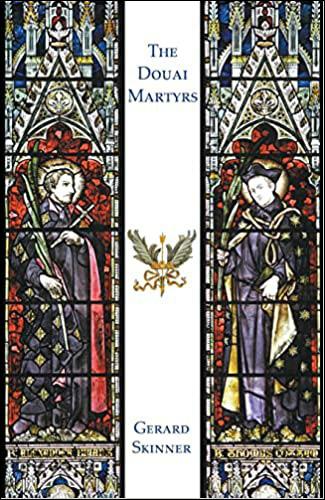
3 minute read
Meeting the Martyrs
Fr John Scott
The Douai Martyrs, Fr Gerard Skinner; Gracewing, Leominster 2023; pb xx + 252pp; ISBN 978-0-85244-998-1

Fr Gerard Skinner, with this book, pays an important debt of the contemporary Church to those 159 priests who, between 1577 and 1680, offered their lives to enable the Catholic faithful to survive and be sustained, even as a tiny remnant, in England and Wales.
Although the index is alphabetical, the treatment is chronological, meaning that reading through from start to finish gives one a feeling for how rigorously priests were being hunted down at any particular time. In 1588 22 priests suffered; in 1679 just three. All the entries follow the same pattern: name, date of birth, place and date of death, date of beatification or canonisation. Beyond that, however, they differ considerably. Some remain largely unknown, perhaps only their year of ordination and death noted. It is frightening to note how many priests were arrested within days or even hours of their landing in this country, knowing that their detection meant almost certain death. For others, rather complete biographies can be put together; sons of Catholic families or others who became Catholics through travel or educational friendships at the universities. I was personally pleased to discover that St John’s College Oxford, where I studied, produced more martyrs than just Ss Cuthbert Mayne and Edmund Campion, of whom I knew already.
The great majority of these martyrs trained at Douai in Northern France, although formation was most frequently brief: Bl John Sandys became a Catholic, travelled to Rheims, entered the English College there on 4 June 1853 and was ordained priest in the city’s cathedral on 31 March the following year; he managed two years of ministry before being taken. On 11 August 1856 he was hung, drawn and quartered at Gloucester. Not only was there danger being in this country; access to the seminary at Douai could be sought by the English government’s agents to identify priests in training and spies were also used in Rome, where others received formation for priesthood. Bl John Lowe, who was martyred a couple of months after Bl John Sandys, arrived in London in December 1583; government spies watched him until his arrest and detention at the Clink prison the following May. There he was tricked into taking the apostate priest and informer Antony Tyrol into his confidence, providing the state with the information needed to ensure his execution. It is difficult to conceive of how these priests lived under the stress of constantly doubting who could be trusted. Yet even when imprisoned they continued their ministry, on numerous occasions reconciling other prisoners to the Faith, much to the authorities’ annoyance.
But there were those who wavered. St John Boste was so severely tortured that he could barely walk and was condemned alongside Bl John Ingram, another priest, and Bl George Swallowell, a former Protestant minister turned Catholic layman. During the trial Swallowell showed signs of wavering, but, encouraged by St John, remained steadfast, asking for forgiveness and receiving absolution from the saint before the whole court. When priests were martyred together, mutual confession and absolution seem to have been normal, alongside prayer and encouragement to persevere.
Fr Gerard is able to give us extracts from contemporary accounts of some of the martyrs’ deaths and introduces us to the extraordinary Spanish noblewoman Luisa de Carvajal, a devoted collector of relics: ‘On the night before St John Roberts and Bl Thomas Somers were to be martyred, Luisa paid the jailor of Newgate a large bribe so that she and her two companions could give the priests, with at least 20 other imprisoned Catholics, a last supper. With Luisa sitting at the head of the table, St John and Bl Thomas either side of her, the assembly feasted’. Next day her agents recovered the bodies from Tyburn and brought them to Luisa’s house, where they were displayed in an atmosphere of great devotion ‘making my house happy with such remains’.
This book is, then, both of devotional, historical and hagiographical value, bringing so much material together in one place and to be commended as such. Are there any drawbacks?
The layout is fine, with good print size, but the proof reader seems to have nodded off occasionally. Some extra punctuation marks appear in odd places, and on pages 116 and 117 St Polydore Plasden becomes St Ploydore twice. Also, was a priest continually allusive or continually elusive? The latter, I suspect.








